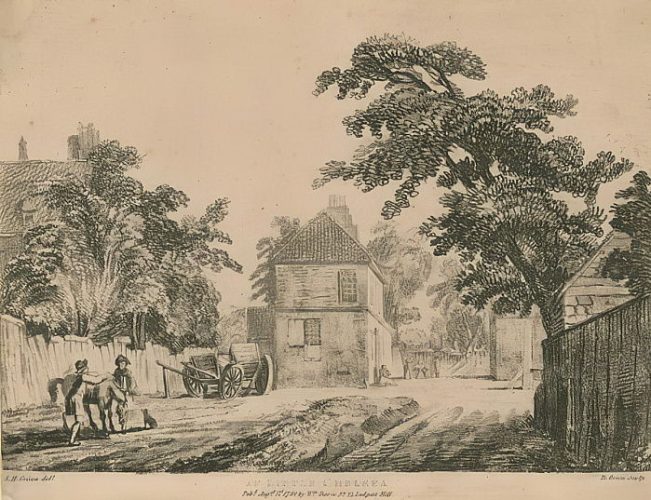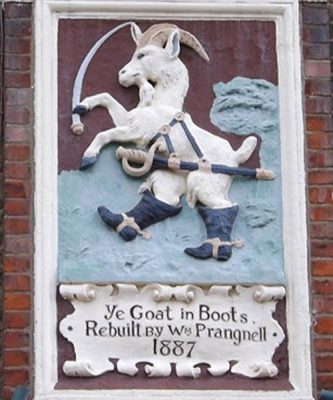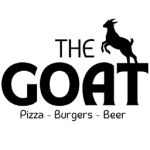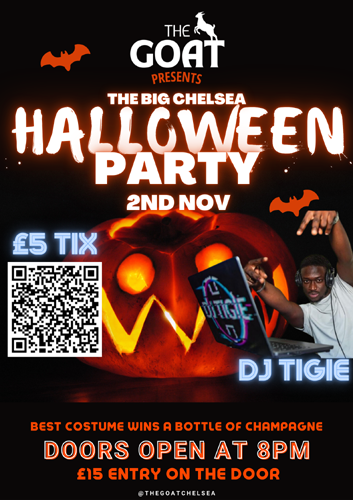350 YEARS OF HISTORY OF "THE GOAT"
For over 350 years, The Goat has offered refreshing beer and food at 333 Fulham Road, Chelsea, London. It is steeped in history which is reflected in it’s decor.
17c – The Fulham Road, has existed under one form or another since the 1300s and was the main route between London and Fulham. Fulham Road traversed what was formerly an old settlement called Little Chelsea, which lay also on the south side of the road in the parish of Chelsea proper. In the 1670s, the Hearth Tax lists 23 buildings, of various size and quality, including an alehouse. The Hearth Tax was introduced in 1662 to help fill the depleted coffers of King Charles II after the restoration of the monarchy and ran in England and Wales until 1689. Every occupier was required to pay a tax of two shillings a year for each hearth or stove in his property.


1725 – The Goat was a coach inn located at 333 Fulham Road. Until the development of railways, coaching inns were a vital part of inland transport infrastructure. They provided a resting point (layover) for people and horses. The inn served the needs of travellers, for food, drink, and rest while the attached stables, staffed by hostlers, cared for the horses, including changing a tired team for a fresh one.
In 1725, the Inn’s name was extended to The Goat in Boots. It is thought that this strange name derives from the Dutch ‘Mercurius is der Goden Boode’ which means “Mercury is the Messenger of the Gods”. At the time, Mercury was the sign commonly used by coaching inns where post-horses were kept. It has been reported that the original sign of the Gods’ messenger was transformed into the figure of a goat with boots, cutlass and spurs by the artist George Morland, who was at the time an impoverished artist, in payment of his tavern bill.
George Morland (1763 – 1804) was an English painter known for his rustic scenes of farms and hunting; smugglers and gypsies; and landscapes inspired by the Dutch Golden Age. His paintings became extremely popular and he was much imitated and forged. George Morland’s painting Roadside Inn (1790) is on display in the Tate Gallery’s Walk Through British Art: 1780–1810 until December 2022.
1789 – One of the earliest known victuallers (a person who is licensed to sell alcohol) of the Goat was James Naunton who also owned property a little further west.
1806 – Sections of the Fulham Road had street (gas) lighting from 1806 and paving by 1845.
1850s – “Little Chelsea” continued as a description of this area into the 1850’s, but went out of use when it became joined to the streets behind, that were being laid out, mostly under the ownership of James or Robert Gunter.
1887 – The Goat in Boots was rebuilt in 1887 by the owner, Lambeth born, William Prangnell. Rebuilt implies that the The Goat in Boots may have been burnt down but there is no record of this. Having incurred the cost of rebuilding the Goat in Boots, Prangnell was still worth nearly £32,000 four years later (inflation would make that £2.84m in 2016), when he died. Outside the pub, one can still see the original relief plaque / waymark which carries a picture of a ‘goat in boots, stood on its hind legs with a sword hanging from its neck.

1989 – 1994 – The Goat in Boots was taken over by Simon Sessler, a well-known musician/songwriter/producer who had worked with rock bands as Yes, Motorhead… It became a celebrity haunt, attracting some of the biggest names in entertainment as regulars. The Goat in Boots became a popular set location for film and TV, most famously in Absolutely Fabulous.
1994 – 1998 – Joel Cadbury, of the famous Cadbury’s chocolate family, bought the venue in 1994. Apparently, he just wanted to purchase the popular club above the pub. As the vendors didn’t want to sell the place piecemeal, Joel Cadbury ended up buying both the pub and club. The venue became a popular destination for young Sloanes who would travel from miles around to join the queue outside to enter the 333 Club.
2013 – The pub was renamed back to “Goat” when Tim Cunliffe, Steve & Katia Manktelow took over ownership. They gutted the interior, paring back to the raw original features, and restructured the building so that the upstairs space, formerly the separate 333 Club, was reconnected with the pub’s lower floors.
In the Prayer Room, ceiling wallpaper created the illusion of ornate carvings and on one wall a mural was painted that is inspired on paintings by George Morland, who painted the original Goat in Boots sign.

GET IN TOUCH
E. hello@thegoatchelsea.co.uk
OPENING TIMES
Monday & Tuesday: Closed
Wednesday – Thursday: 12 – 11 pm
Friday & Saturday: 12 pm – 12 am
Sunday: 12 – 8 pm
SUBSCRIBE
Keep in touch with us, and we’ll send you offers, updates and more!


